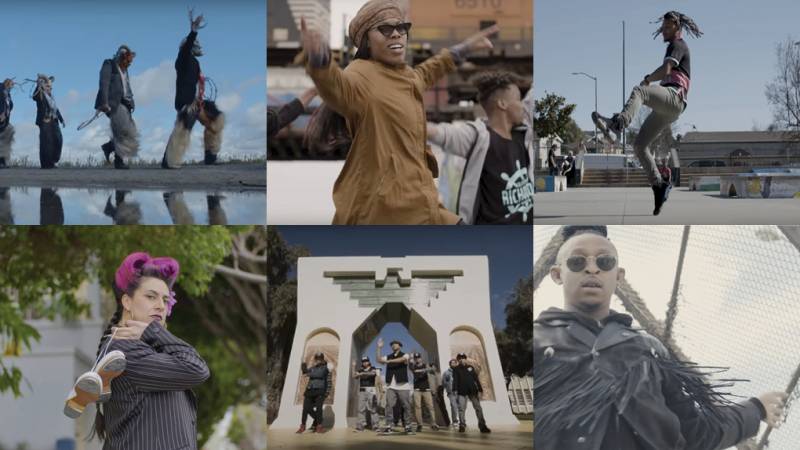Stay active this summer through dance! This selection of If Cities Could Dance videos features cities across California where dance, place and culture intersect. Invite students and their families to step into the shoes of dancers who dare to imagine what it would look like if their city could dance. View the videos and start dancing with the bonus activities.
Watch the playlist of California-based episodes or view all of KQED’s If Cities Could Dance series.
A Praise Dance for the Town of Oakland
Dance in Oakland might be synonymous with homegrown street styles like turfing, but the city’s creative spirit attracts people from all walks of life, and they, in turn, help shape its artistic culture. Spirituality plays a big role in Frankie Lee Peterson’s relationship with dance, and his belief in God is the inspiration for his liberatory movements. Watch as Peterson leaps, twirls and pirouettes in front of an Oakland Superheroes Mural, outside the historic Fox Theater, and by the Remember Them: Champions for Humanity Monument, which pays homage to important figures like Maya Angelou, Frederick Douglass and Malcolm X.
How Turfing Became Synonymous with Oakland
If you’ve spent any time in Oakland, you’ve probably witnessed some turfing. The homegrown dance happens everywhere: on BART, at the First Friday art walk, at the Warriors’ Oracle Arena and even in music videos for Bay Area rap stars like E-40 and G-Eazy. In this Oakland episode of If Cities Could Dance, directed by Yak Film’s Yoram Savion, meet Oakland dance stars Zeus, Yung Phil and Icecold3000. Watch as they dance in front of the Creators Gone Create turfing mural in West Oakland, MacArthur BART station and Youth UpRising teen center in East Oakland to the music of Drew Banga and Jwalt, also featuring Mistah Fab.
Zoot Suits and Zapateado: Channeling Chicana Resistance
In the heart of San Francisco’s Mission district, the pulsing beat of the neighborhood’s dense and vibrant mix of Latinx cultures comes from the clicking heels and toes of tap shoes.
